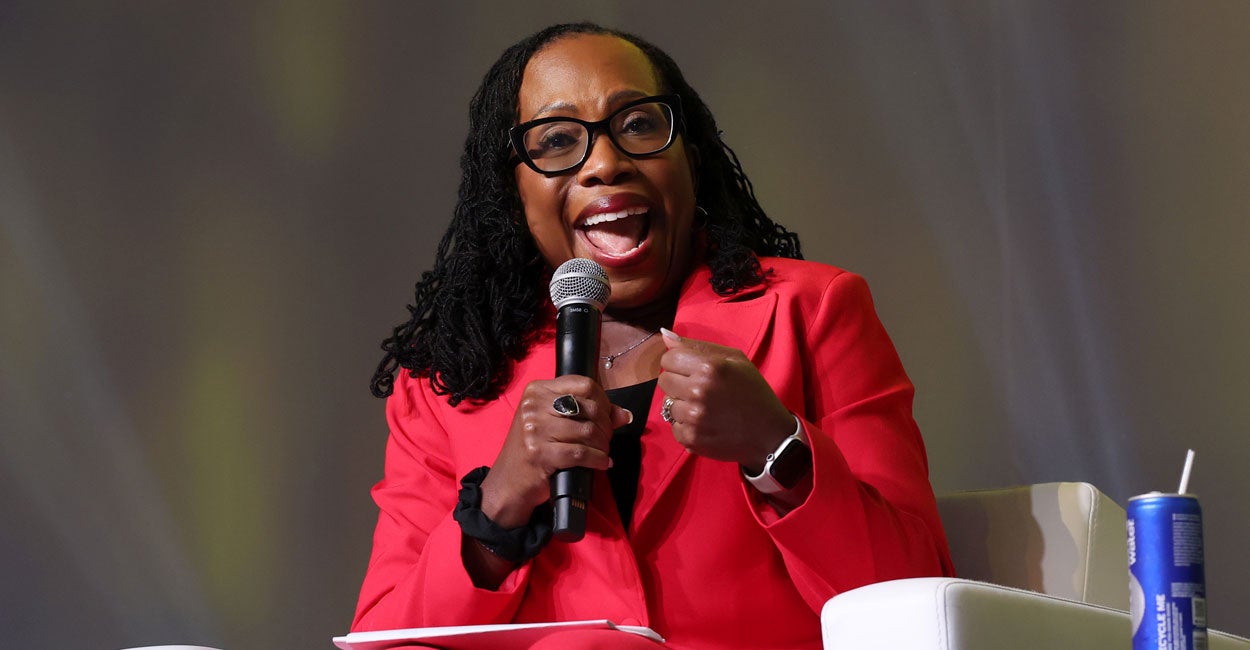
During a segment of today’s episode “Victor Davis Hanson: In His Own Words,” Victor Davis Hanson and Jack Fowler discussed Supreme Court Justice Ketanji Brown Jackson’s recent comparison of Black Americans to disabled people, and how race-based districting can actually harm Black candidates who may want to seek higher office. This transcript has been lightly edited for clarity.
—
**Jack Fowler:** Victor, let me read the headline here. It’s from the Daily Mail: “Justice Ketanji Brown Jackson argues for a race-based redistricting.” This was during the Supreme Court hearing about a week ago from when this podcast aired.
Let me read this: “Liberal Supreme Court Justice Ketanji Brown Jackson on Wednesday compared efforts to draw congressional districts along racial lines to the way disabled people were granted easier access to buildings after the Americans with Disabilities Act became law.” That’s quoting her.
She said, “‘The idea of Section 2 of the Voting Rights Act is that we are responding to current-day manifestations of past and present decisions that disadvantage minorities and make it so that they don’t have equal access to the voting system. Right?’” Jackson said while questioning a lawyer representing Louisiana voters who argued that the court-ordered creation of a second majority-Black district in the state violated the 14th Amendment by prioritizing racial composition in its boundaries.
“They’re disabled,” the justice said of minority voters in the state.
Victor, are Blacks disabled? The Supreme Court justice seems to think so.
—
**Victor Davis Hanson:** Yeah, I don’t know what she means, but I think a lot of people’s problem with DEI (Diversity, Equity, and Inclusion) and affirmative action is that there’s no time limit on it. And I guess that’s what Brown was trying to say—that once you state that Blacks are permanently disabled, as if it’s a physical condition, then you’re going to have permanent set-asides. But that was never the point.
Even most of the Supreme Court justices who voted for affirmative action to continue said they felt that in 20 years it would no longer be needed.
When you look at undergraduates today and at most elite universities, the racial proportions are roughly balanced. If you look at women, they graduate with about 54% of all Bachelor of Arts degrees. In law schools and medical schools now, women are the majority of students.
For example, on the Stanford website—though I don’t know how accurate it is—it shows that about 9% of undergraduates are white males.
If you look at per capita income levels in the United States, so-called whites rank around eighth or ninth. Indian Americans are number one, followed by groups such as Japanese, Korean, Chinese, and Arab Americans.
So, the whole idea of DEI is frozen in amber. It’s stale. It doesn’t adapt to change.
There are other problems with it, but it fails to show that class and race are no longer identical. We have many people claiming they’re completely disabled or disadvantaged.
To illustrate this, I looked at the four biggest cities in the United States: New York has Eric Adams as mayor (Black), Los Angeles has Karen Bass (Black), Chicago has Democratic Brandon Johnson (Black), and Philadelphia has Cherelle Parker (Black).
In San Diego, Dallas, and other cities, the majority of the biggest cities have Black mayors—and they did not have racially gerrymandered districts. These were citywide votes.
So, why do we still have race-based districts in the House at this late date in the civil rights movement?
It is actually to the disadvantage of Black Americans to have racially created concentrations on the basis of race.
When you have two or three Black candidates running for Congress in overwhelmingly Black Democratic districts, you get a competition to see who can be the most radical, the most authentic, the “most Black.”
Once that person gets elected, that’s often the end of their political career. They may rise in ranks within the party, like Hakeem Jeffries or Jim Clyburn, but they won’t typically be elected as senators or national candidates.
The only way to really be a national candidate—not just for Black politicians, but for anyone—is to hold statewide office, such as governor or senator. Kamala Harris ran as a senator.
What race-based districts do is confine Black politicians, limiting their opportunities to run in broader, more competitive elections.
For example, Barack Obama’s best break came when he lost a congressional race to Bobby Rush, a former Black Panther and considered an “authentic Black radical.” That loss helped liberate Obama to appear more moderate, which eventually led to his election to a statewide Senate race.
That explains why there’s a larger percentage of Black members in the House compared to the Senate—they have these specially carved-out districts, which make it very hard to run statewide or nationally.
—
I don’t know why Ketanji Brown Jackson—whom I think, regardless of race, is the weakest Supreme Court justice we’ve had in a generation—is making these statements.
She was the one who, during her confirmation hearing, could not define what a male or female is.
It’s sad; she’s way out of her depth.
Saying that Blacks are disabled makes no sense.
If you keep assuming that, it reflects a revealing assumption held by some left-wing Black leadership: that Black Americans are permanently disabled.
I don’t think most people believe that’s true.
—
In the realm of reparations, for example, the California Legislature and Governor Gavin Newsom recently passed a second phase of reparations.
Our budget is $20 to $50 billion short each year, and we’re going to have to make massive cuts elsewhere.
Yet Newsom is essentially telling the state he wants to take 5% of the resident population and give them money for something that happened eight to nine generations ago somewhere outside California—which was a free state during the Civil War, opposed to slavery, and never allowed it within its borders.
Furthermore, there is confusion about how to define who qualifies as African American for reparations.
Is it one-third, one-fourth, one-eighth, one-fifth? How long must one have lived in California? If you moved from Utah after hearing about reparations, do you qualify? Does Willie Brown, the former mayor, qualify? How about Kamala Harris, who’s half Indian?
When you enter the racial realm of privilege, bias, and prejudice, as was once determined by the Old South, you face an impossible labyrinth.
Ultimately, you have to have rules, and once you start making those rules, they become ridiculous.
—
Even the Third Reich struggled with defining Jewishness.
Was it someone one-quarter or one-fifth Jewish?
They employed genealogists to work with the Nazi hierarchy.
Sometimes accusations would arise that a rival was part Jewish, and exemptions might be sought.
It was a ridiculous situation.
If their ideology held that Jews were so inferior and different, they wouldn’t have needed to mark them with a star, because they looked just like everyone else.
In reality, many Jews looked like everyone else, spoke the same language, and were fully assimilated—some not even observant in their religion.
—
**Jack Fowler:** They fought and died alongside us in World War I.
**Victor Davis Hanson:** Exactly.
There were Iron Crosses collected at Auschwitz worn by people hoping those medals would exempt them because they had been heroic German soldiers in World War I.
If you go down the route Ketanji Brown Jackson is advocating, you have to create an entire system to define who is “disabled” and who qualifies for special protections or reparations.
—
We publish a variety of perspectives. Nothing written here is to be construed as representing the views of *The Daily Signal*.
https://www.dailysignal.com/2025/10/23/victor-davis-hanson-ketanji-brown-jackson-is-way-out-of-her-depth/


